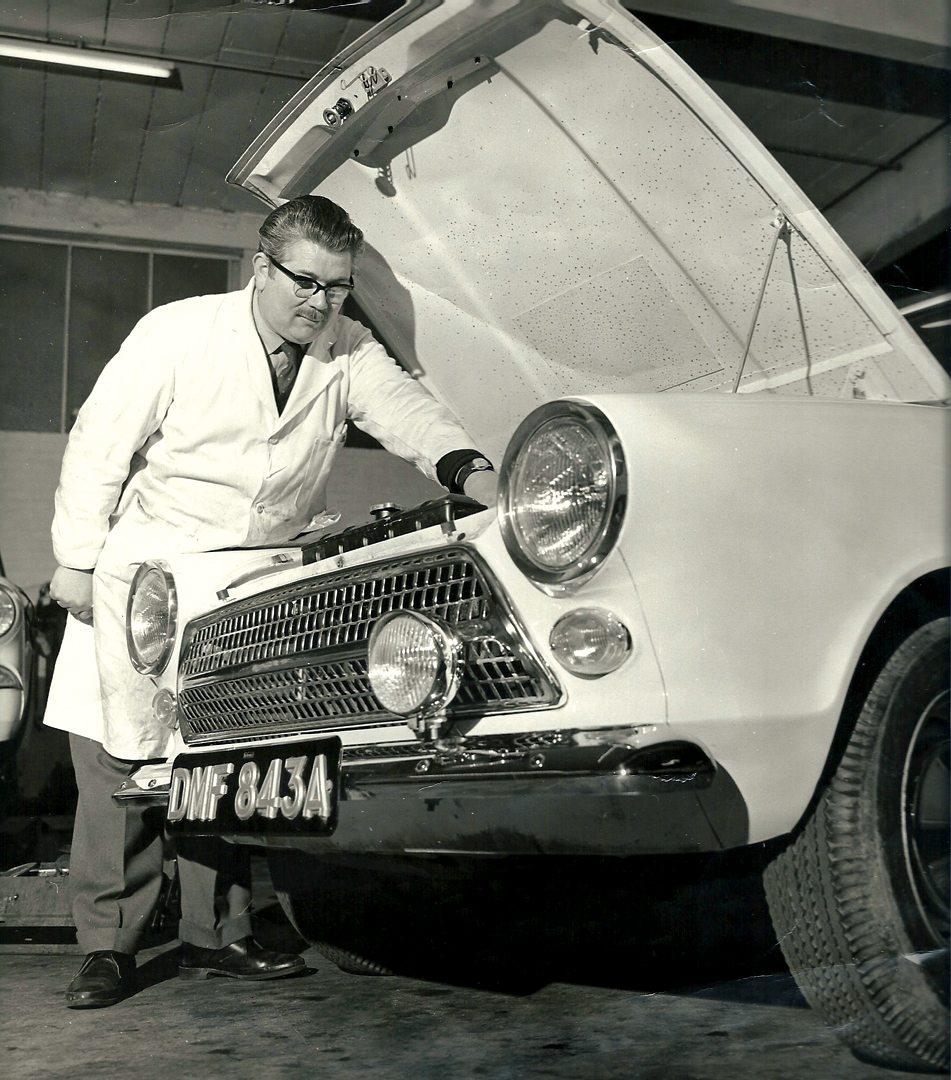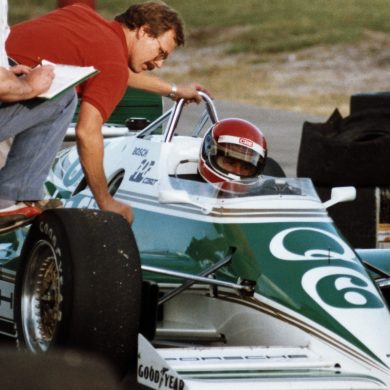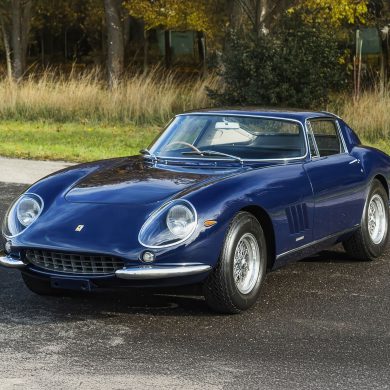I remember my first encounter with John Winter. I called him John, “My name’s Spike! Call me Spike,” he said. Spike was a no frills man, down to earth, and called things exactly as he saw them. He was a great character full of dry humor.
His initial ambition was to be a lorry driver, however, after working with his father in the dairy business he was called up for National Service in the RAF. He wasn’t too pleased with his position at first, but as his life went on he reaped the benefits of those years while working on Rolls Royce Merlin and Lycoming engines. During his time in the RAF his ambitions changed to mechanical engineering, and following his discharge from the RAF in 1946 he answered an advert and joined Fraser Nash. Now with relevant experience and qualifications, his career path broadened. He stayed at Fraser Nash for about six years, working at first in the service and maintenance department and later progressing to new cars with particular attention to the differential units. He also was a racing mechanic for Sir Stirling Moss and Bob Gerard, and became very familiar with Bristol engines. Following a conversation with a friend, he left Fraser Nash during a lunch break to start work servicing transport for Birtles Cleaning Services, “Fraser Nash was the best job in the world, but the money was shit!” he exclaimed. Eventually he ended up at the John Willment Racing Team.
While at Willment’s he really made his name in the field of mechanical engineering and engine tuning, and became responsible for the preparation of competition cars for many of the top drivers of the day. At Willment’s he worked alongside the likes of Louis Giron, a seasoned engineer who had apprenticed at Bugatti, and Mike Hewland (of gearbox fame). Between the three of them they developed an overhead valve conversion unit for the Ford E93A engine. “Cars seemed to rain on us at Willment’s. First, two or three MkI Ford Cortinas, then a Galaxie, then a Cobra, there was something in every conceivable space. When the others left I was in charge. One day, John Love came to the garage and asked if we had a car he could race. He was simply told if he worked on a car he could race it! “It was very chaotic,” said Spike. Jack Sears, who raced with the Willment team during 1963 and ’64, described Spike as a painstaking and meticulous mechanic with an unflappable personality. He was calm and confident in his ability and instilled a good feeling among the drivers.
After 11 years with Willment’s, Spike joined Ken Brittain and formed Racing Services (Engines) Ltd. in 1967, a highly successful company that provided top class engines for drivers and teams like Graham Hill and Tom Walkinshaw.
In more recent years, Spike started “The Engine Shop,” which specialized in restoring racing engines such as BRM, Alfa T33, and C- and D-Type Jaguar engines. He had an invaluable ability of just listening to an engine and knowing exactly what was wrong with it—with no hesitation in his summary or opinion. Only a few months before his passing, he was still consulting with several people offering advice on various technical issues.
Many will miss Spike for his warmth and good sense of humor. He was what many refer to in motor racing as a “proper bloke.”
Vintage Racecar offers sincere condolences to his family and friends.
By Mike Jiggle










